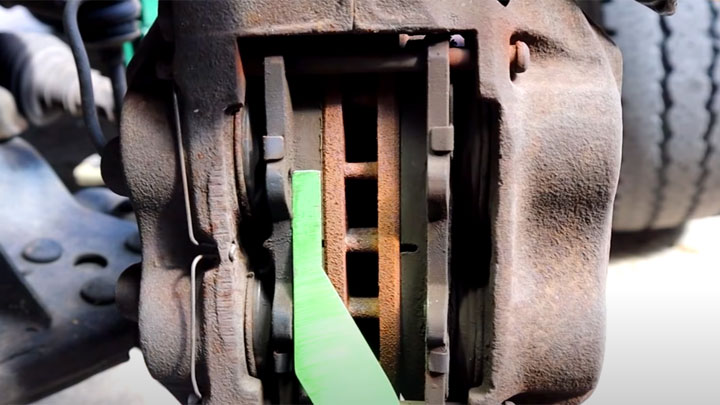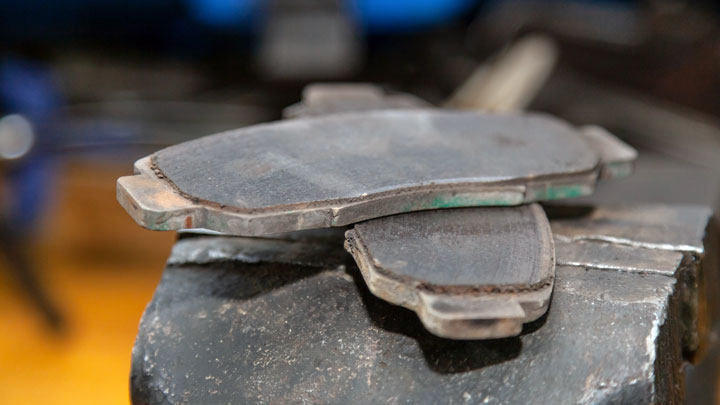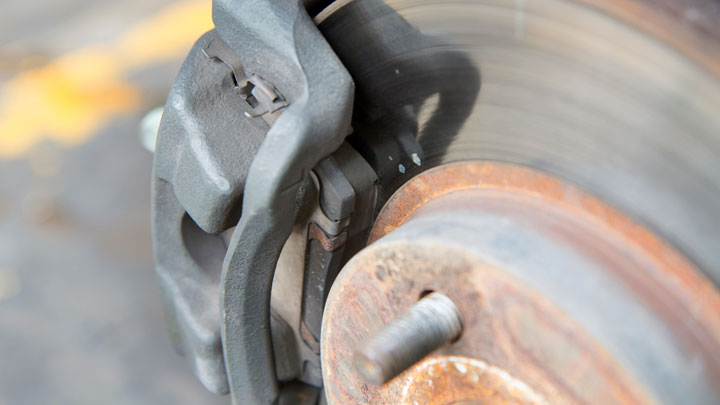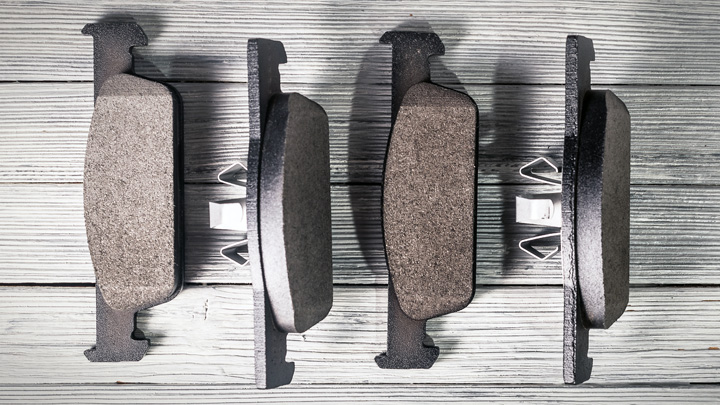Brake Pad Thickness (Minimum, Ideal, and When New)
Disc brakes use pads pressed against rotors to stop vehicles, generating extreme heat that wears both components. Pads absorb the brunt as a sacrificial part, designed to wear before more expensive rotors require replacement. Monitoring pad thickness remaining, is key.
After reading this article, you’ll understand what thickness new pads start at, when you should replace them, what the absolute minimum thickness can be, and how to accurately measure brake pad thickness.

What Thickness Do Brake Pads Start At?
There is some thickness variation between different make vehicles with respect to new brake pads. But in general, this rule can be applied:
- New front pads will be 12mm thick (about 1/2″).
- New rear pads can be the same or may be slightly thinner in the range of 8 to 10mm (about 3/8″).

For some automobiles, a new front pad set may have thickness differences between the inner and outer pads. For these cars the wear rate varies between inner and outer due to the operational behavior of the brake calipers.
When this behavior is expected, the manufacturer will attempt to size the pads so both inner and outer will need replacement at the same time.
Minimum Brake Pad Thickness
The minimum pad thickness is approximately 2 to 3mm (about 1/8″).
This is an absolute minimum and indicates pad replacement is required immediately. You should limit your driving and get your car to your favorite repair or brake shop as soon as possible.
Any extended driving with pads at this thickness can result in severe wear to the rotors adding additional expense to your brake job. Additionally actual brake performance may be degraded leading to longer stopping distances and increased risk of collision.

Related: 5 Symptoms of Worn Brake Pads
Recommended Brake Pad Thickness
When you are checking pad thickness, you should take note if the value is approaching the minimum limit discussed above. For example, pads at 4mm thickness are usable but very near the end of their useful life. Don’t plan any long trips.
The halfway point for front pad life will be at a thickness of about 8mm. Should you check your front brake pads and find this thickness, your pads are at about halfway to the miles when replacement will be required.
If you checked pad thickness, and it was within the range of 6mm to 12mm (front brakes), this is a recommended thickness range where your brakes will perform well and pad replacement will not soon be required.
Why Do Some Pads Wear Faster Than Others?

As mentioned earlier, driving habits will affect brake pad life. Disregarding this, pad life will primarily be related to the pad friction material as discussed in this article.
To simplify, let’s summarize:
- Inexpensive pads made of organic materials are typically soft and will wear out more quickly than other pad varieties.
- Semi-metallic pads are harder than organic types and are fabricated of a more durable material. These will provide superior stopping performance and will last longer than organic pads.
- Ceramic pads tend to manage heat better than organic or semi-metallic pads and also are made of a more durable material. These will generally provide the best life.
How to Measure Brake Pad Thickness
This measurement can be done without removing the wheels. The only caveat here is that the wheels must have openings large enough to be able to see and access the outer pad ends.
If the wheel openings are too small or non-existent, the car will have to be jacked up and placed securely on jack stands, and the wheels removed for this evaluation.
Tools Required:
- Flashlight or equivalent shop light
- Measuring gauge tool (a metric long handled hex-key set can also work)
Measuring Pad Thickness
- Find an accessible brake pad end at either side of the brake caliper.
- Hold the flashlight to illuminate the area you wish to measure.
- Place the measuring tool (or hex key end) at the exposed pad end and against the rotor surface.
- The correct thickness tool will fit snugly between the rotor surface and the metal backing plate. You may have to try several tool sizes to get the one that best fits this space.
- Observe the thickness value stamped on the measuring tool. This will be the pad thickness.
Can Pad Thickness be Measured Without Removing the Wheel?
In most cases, the outer pad thicknesses alone will be measurable with the wheels on the car. Knowing only the outer pad thickness will let you know the pads either have wear left or the pads need to be replaced.
A very thin (5mm or less) outer pad thickness would be an excellent indication that the inner pads should also be checked. Should you have doubts about pad thicknesses, take your car to a qualified service technician.
When the time comes to replace your brake pads and you are a seasoned DIYer, the following articles on this site may prove helpful:
Are All Brake Pads the Same?

First, it’s worth noting that your driving habits will have a huge impact on the life expectancy of your brake pads and rotors. That said, all brake pads are not the same.
Consider that brake pads are built of two components: The metal backing plate (which is the part that the caliper pistons push on) and the attached friction material segment (or segments) that bear against the brake rotor. These two components are common for all brake pads.
So what are the differences between various brake pads?
The first relates to the way the friction material and steel backing plate are attached to one another. Some brake pads have the friction material held in place by soft metal rivets. Other pads will have the friction material bonded in place by a high temperature adhesive.
In either case, the worn out thickness limit will be about the same. Pad replacement must be done before these attachment provisions (rivets or adhesives) come in contact with the rotor.
The second and more significant difference between brake pads is the material that is used for the friction segments. A variety of such materials are employed, and each type will yield different brake life and performance.
Related: 5 Best Brake Pads for Cars, Trucks and SUVs
How Often Should You Check Your Brake Pads?
Pad thickness should be checked about every 5,000 miles. During or following an oil and filter change would be a good time to do this.
- DIY Car Repair Tools – Floor Jack and Jack Stands - Dec 12, 2023
- DIY Car Repair Tools – Socket (Ratchet) Wrench - Nov 9, 2023
- DIY Car Repair Tools – Torque Wrench - Apr 20, 2023
